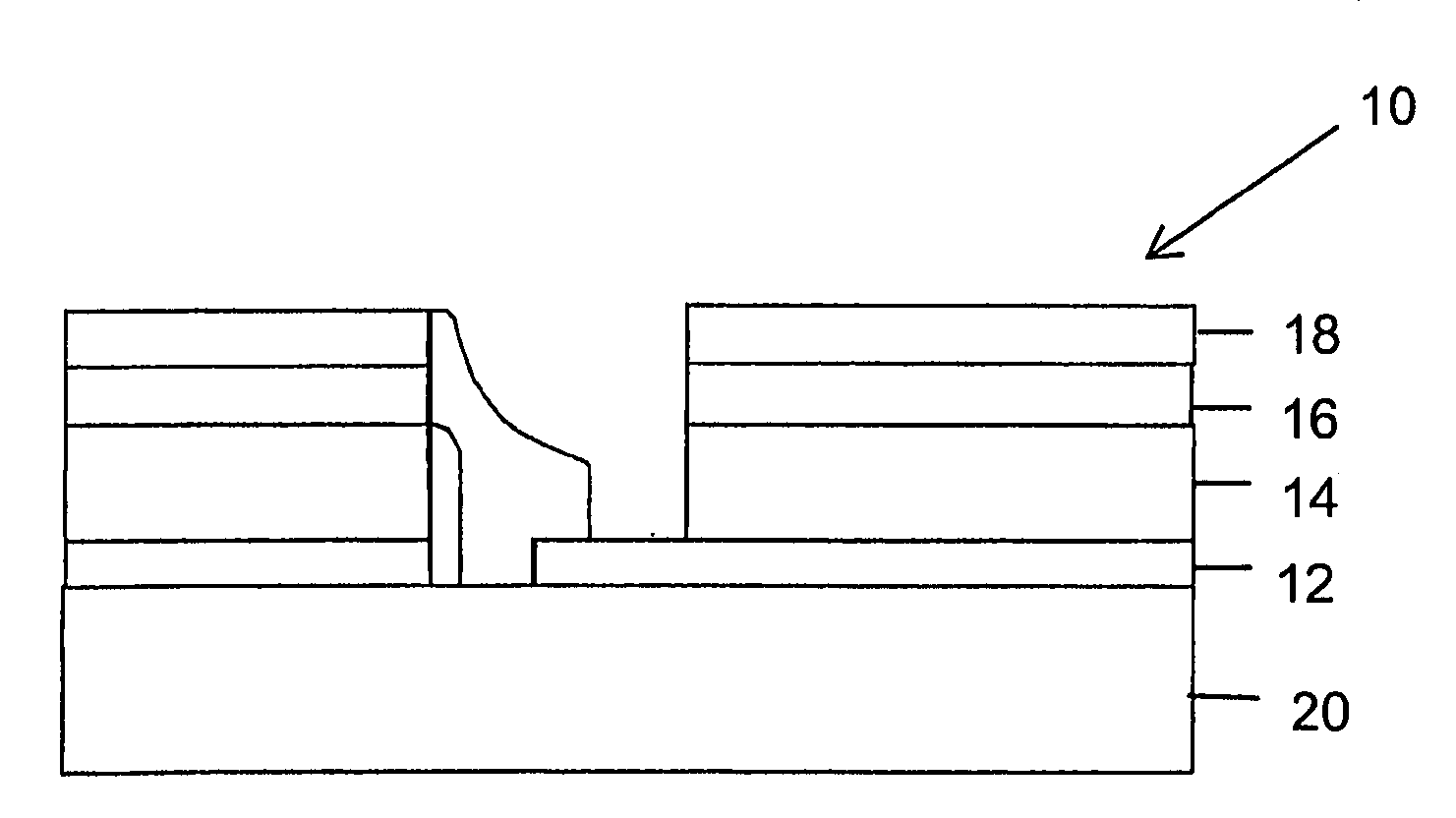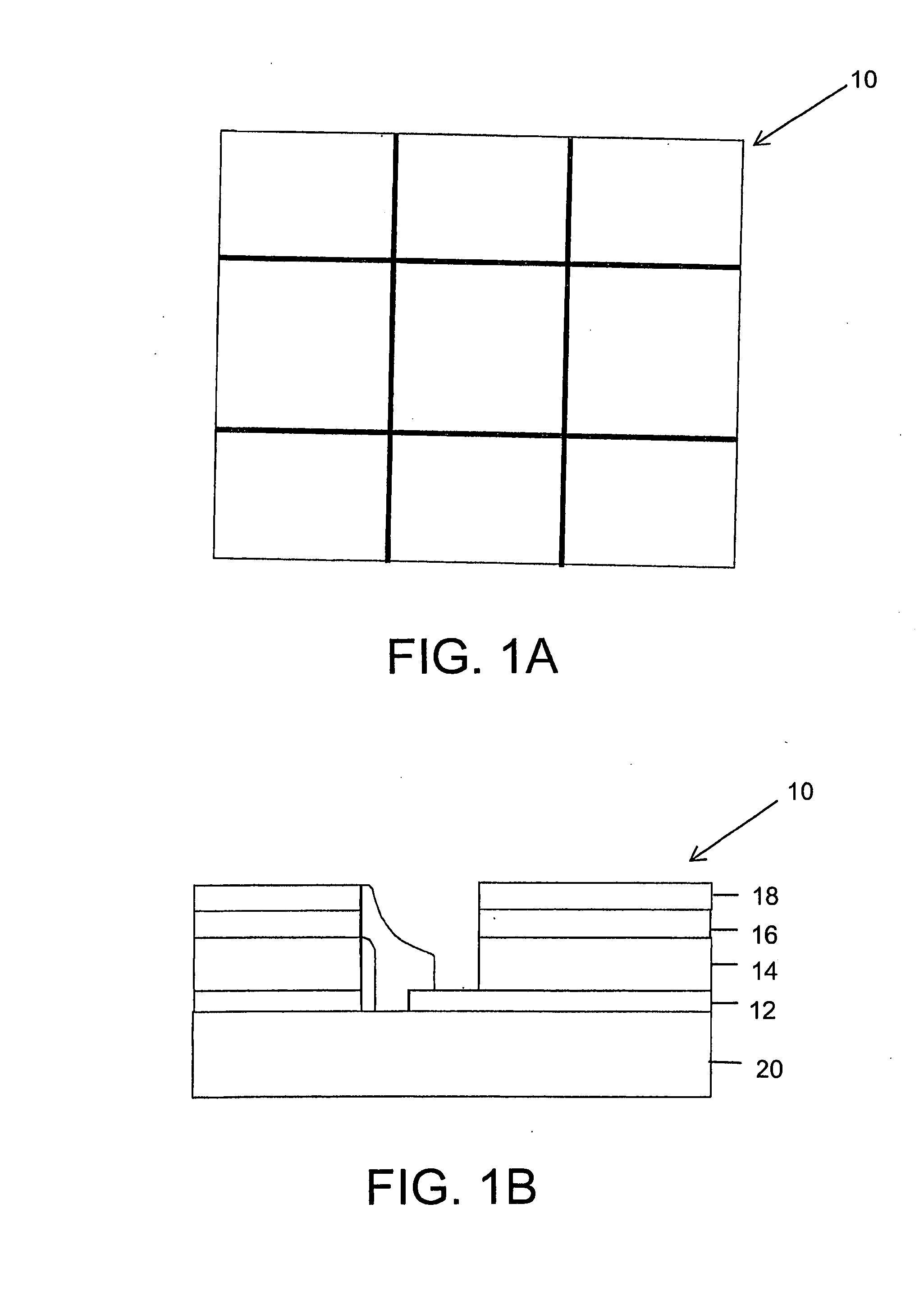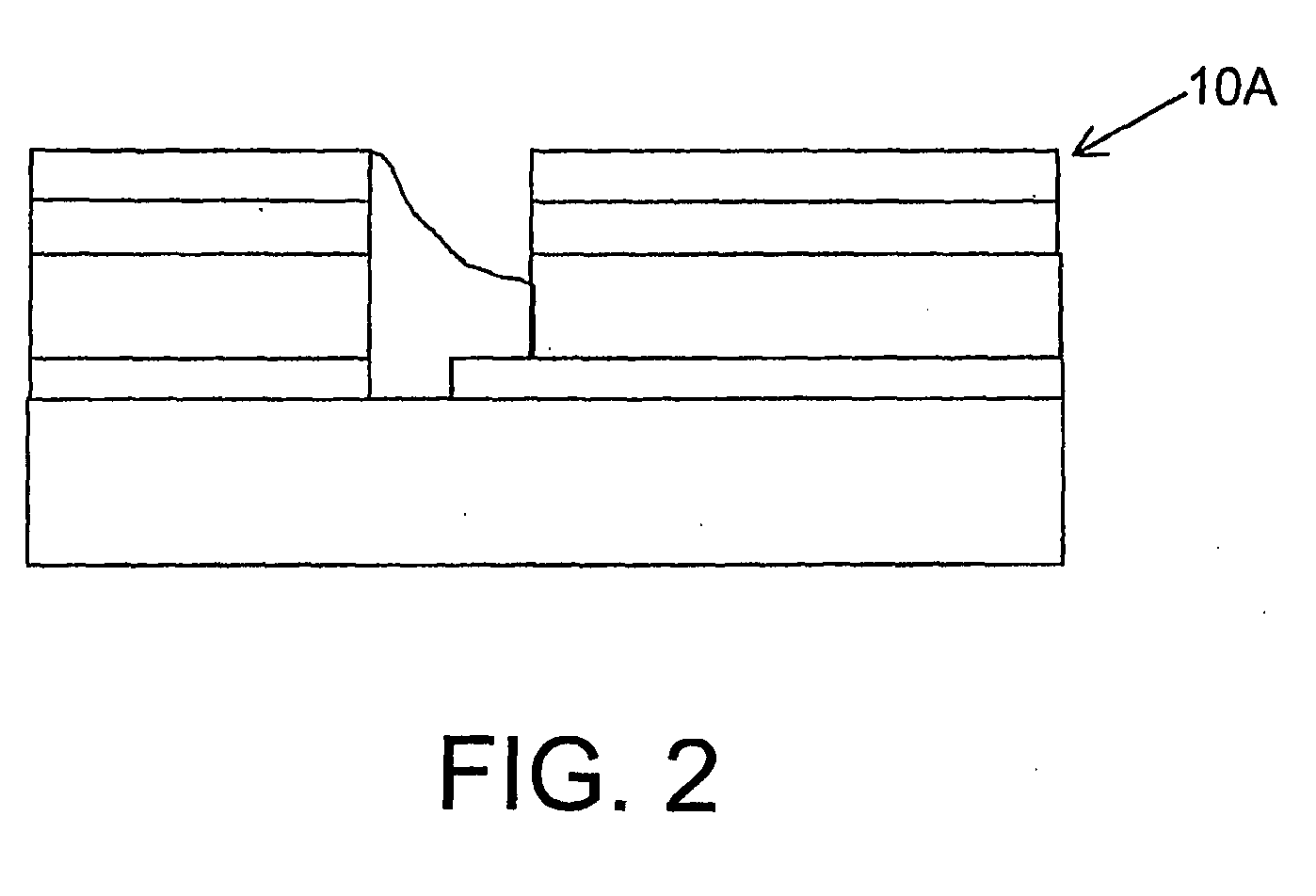Precision separation of pv thin film stacks
a technology of pv thin film and stacking, which is applied in the field of system and method for manufacturing thin film panels, can solve the problems of manual positioning of cutting edge and width, overlay matching problems, etc., and achieve the effect of improving throughput, quality and cost of the final produ
- Summary
- Abstract
- Description
- Claims
- Application Information
AI Technical Summary
Benefits of technology
Problems solved by technology
Method used
Image
Examples
Embodiment Construction
[0021]Generally speaking, the system and method of the present invention enable automated line cutting and formation of electrical contacts on deposited multi layer structures. The inventive concept may be applied to separate deposited multilayers into well defined segments as illustrated in FIGS. 1A-1B. In particular, FIG. 1A, is a diagram illustrating one exemplary multilayer panel 10 after the precision patterning steps of the present invention, while FIG. 1B is a side view illustrating a portion of the multilayer panel 10 of FIG. 1A. As illustrated in FIG. 1B, the multilayer panel 10 includes a base layer 12, a first functional layer 14, a second functional layer 16, and a top layer 18. The base layer 12 is positioned on top of a substrate 20. For purposes of comparison, FIG. 2 illustrates an exemplary multilayer panel 10A formed using a manual patterning process where the scribe lines are not perfectly aligned and result in quality issues including electrical shorts in the pane...
PUM
| Property | Measurement | Unit |
|---|---|---|
| thickness | aaaaa | aaaaa |
| thickness | aaaaa | aaaaa |
| thickness | aaaaa | aaaaa |
Abstract
Description
Claims
Application Information
 Login to View More
Login to View More - R&D
- Intellectual Property
- Life Sciences
- Materials
- Tech Scout
- Unparalleled Data Quality
- Higher Quality Content
- 60% Fewer Hallucinations
Browse by: Latest US Patents, China's latest patents, Technical Efficacy Thesaurus, Application Domain, Technology Topic, Popular Technical Reports.
© 2025 PatSnap. All rights reserved.Legal|Privacy policy|Modern Slavery Act Transparency Statement|Sitemap|About US| Contact US: help@patsnap.com



